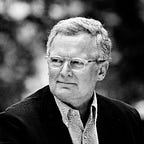The new kernel of on-demand work
Industrial workers who work on capital-intensive assembly lines are typically paid fixed hourly wages and have the support of a variety of other institutional arrangements such as paid sick leave and collective bargaining. By contrast, self-employed post-industrial workers are more likely to be paid piece rates with fewer institutional arrangements. The worker is paid a fixed rate for each unit of production/service. One of the few observable differences between the industrial and the post-industrial worker is the level of independence: the latter can set their own pace and work mainly at times they choose, like hours of surge pricing, whereas in factories, warehouses and in many offices, individual workers cannot set their own pace, but must learn to function at a time and pace set for them by the process, the machines and other people.
The theories we use to understand work, model the labor services of employees as undifferentiated, generic inputs, for which prices can be predetermined as wages, or as piece rates.
Why are we are transferring the history of work to the future of work?
An Uber driver replicates the work patterns of garment “factories” in developing countries. Independence, in the case of piece-work, can hardly be called societal progress, although there are many people who are tired of being dependent on employers and work hours and welcome this option.
Technology allows us to re-imagine work.
What if the kernel of on-demand work is not short-term associations and spot market exchanges, but in allowing us to create a new understanding of work: contextual interaction based on collaborative creativity and human capital? The relations between workers become the central, and in many ways, defining feature of the firm.
A firm, then, is not a bundle of assets belonging to owners, but a bundle of dynamic commitments between people. The organization becomes a process of ongoing organizing.
The future of human-centric work can be built on relations and complementarity: the human capital of a worker is then worth more when applied together with the human capital of other members of the community. In industrial processes your value could easily be less than what you are. In contextual, post-industrial settings your value can be more than what you are.
You work more from your relations than your skills.
The productivity of an individual depends not just on being part of a community but being part of a particular community engaged in particular commitments. The context matters most.
We used to think that collective bargaining through unions could serve economic efficiency when employees were contracting with a well-defined entity, the existing firm. Post-industrial work is interaction between interdependent people. Employees contract with other employees and the customer. The firm is the interaction and a nexus of the interplay of contracts.
The goal is to help individuals into relationships that balance complementarity, the growth of human capital and symmetric claims to (long-term) financial returns. Adam Smith was the first to envision a genuinely self-designed economic life for as many people as possible. It was something that resembled what we call entrepreneurship.
The death of the old can be the birth of the new. What is now disappearing is not work, but the notion of a job. It is a social artefact that emerged during the nineteenth century as a way to package tasks. It was a rigid solution to a dynamic problem.
The search is even on for a word to replace work. Perhaps, the future of work is about “value-adding relationships”. Networked intelligence enables quite ordinary people to perform in extraordinary ways. What we still lack, are the institutional arrangements that would support this third way of working.
Properly understood, technology is less about replacing people than it is about connecting them to each other and to their customers in totally new ways. Perhaps, the thin labor markets we have today between individuals and firms, are going to be much thicker in the future, between individuals and customers.
